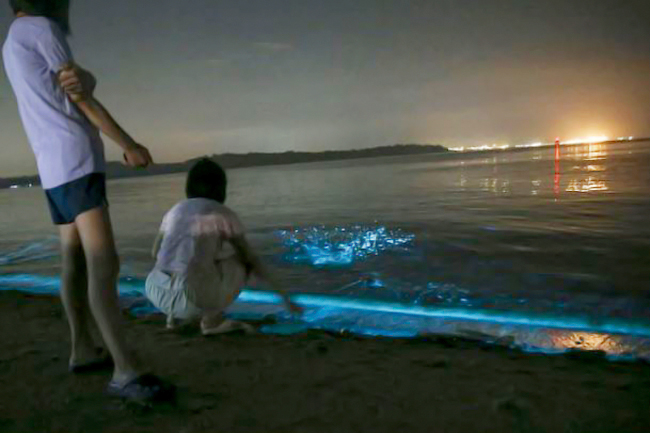ANN/THE STAR – The ghostly blue glow that washed up on Singapore’s shores in March has been spotted off Singapore’s southern shores, in the open waters around Sentosa, St John’s Island and Raffles Lighthouse.
This light is emitted by a group of marine micro-organisms called dinoflagellates, specifically Noctiluca scintillan, said PhD student from Nanyang Technological University’s Genomic and Ecology of Eukaryotes Laboratory Clarence Sim.
Sim, who is conducting research in Singapore’s marine microbiology, said that he spotted the wave of bioluminescent plankton during his monthly seawater sampling for his research.
“From the boat, we observed the same dense green blobs dominating the waters (in the morning) and with one quick look, I knew it was the same as the one we had in January and March 2022,” he said.
He and his team confirmed the identity of the “blobs” in the lab. He added: “To be honest, we weren’t really expecting it at all and so it was really a surprise for us.”

While it is unclear how long the glow will last, Sim said that based on the two previous blooms, this one is likely to last about a week.
“Certain sea conditions – such as low oxygen levels – can influence the longevity of a Noctiluca bloom and even make it more likely for a bloom to occur,” he said.
“But due to insufficient monitoring in Singapore, we are unable to draw direct conclusions on how long this bloom will last and when the next bloom will come.”
Sim added that those who want to see the bloom should head near the southern coast, like the beaches off Sentosa.
A hairstylist who wants to be known only as Alan spotted the blue glow on Monday at around 7.30pm while out on a yacht off Sentosa with his friends.
While the washes of blue light have delighted Singaporeans, Sim said that the frequency of such blooms of late have been “concerning”.
He added: “These blooms are usually quite rare, and over the two and half years of my research, this is the first time that I’ve seen it bloom thrice within a single year.”




